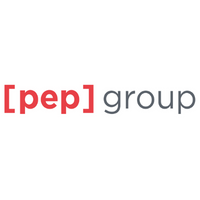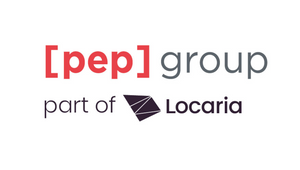
“Trust Is the Basis of All Good Relationships In This New World of Creating Content”

Pepelatz Production is a proud supporter of LBB. Over the upcoming months, as part of the sponsorship of the Ukrainian edition, we will be spending time with some of the personalities at the forefront of the global production industry today.
In this conversation, we speak with Pat Murphy, founder of production consultancy Murphy Cobb Associates. In this interview he explores why clients and their creative partners need to improve on trust and transparency in order to succeed.
LBB> Do you believe that brand CMOs need a better understanding of end-to-end creative production?
Pat Murphy> Frankly why would a CMO understand what it takes to create an asset, right? With all of the huge amount of content that one needs to create, brand CMOS and many clients don’t understand what happens between the start point and end point of creating something unless they've been in that kind of area - they've been in a digital agency or they come from that background. More often than not, they won't know what it takes to do that. So do they need to have an understanding of it? Yeah, I think so. To a point, I think it's more about having a partner that they can trust. And I think that's probably the basis of all good relationships with people in this new world of creating content.
LBB> A lot of people in the industry from post to production to agency are all saying the same thing - that they can do everything. Do you feel that this is becoming an issue and would it be better to have a bit more openness about each company’s specialities?
Pat> I had a client call me a couple of days ago who said, “We need to think about our global digital content production strategy. We have a couple of companies that we work with but honestly, we don't know whether they're right or wrong. We don't know whether the numbers are right and we have no idea if what they're telling us is is true or not.”
And they had this feeling that the companies may have pockets of excellence, but that in other places around the world, it’s not so great. So the question is whether brands should be thinking about having different partners in different geographies that are perfect for what they need locally - particularly as we're getting more into personalisation? You can't really decide to have a partner based in London coming up with digital content but that needs to be personalised in India, because it doesn't make any sense. So you need to have a range of suppliers and a range of content production partners around the world that can all come together with one overarching brief.
But what most clients don't know is where they are right now. They haven't got a clue who their content production partners are across all these different places around the world, unless they're just a local client. If you're one client in one market, then you probably have a pretty good understanding. But most international clients won't have a clue of the landscape they have right now. So what we try to do at MCA is to start an audit of where they are currently at and where they want to be as a business.
There are a number of different options for clients to look at to move forward, but more often than not, they get the same bullshit from all their agencies and from all the production agencies because they all say they can do it. And there is no one there to help the clients actually understand whether it's right or wrong with their benchmarks - and that's hopefully where we come in.
It’s about understanding where the business is moving towards and then replicating it. You may not want to have one global partner, or you may want to have one global partner to create the master assets and the framework and then use local partners to create the assets that come off the back of that.
LBB> So what would you say is the perfect blend of company or group of companies in terms of things like creative, tech and production - or is this different for every client?
Pat> I do think the optimal solution for a client is a blended solution, but it quite often takes more resources from the client end to manage that, unless you come to someone like us to help with that process. But a blended solution is always going to be right, because no one big company is going to be right for a client, it just doesn't make any sense for me. Because as I said earlier, you're going to have pockets of excellence, and there's going to be pockets of not that great work, as well. And in many cases, whenever we are involved with production agencies, or content agencies, whatever they like to call themselves, they kind of morph into different things every day.
More often than not, we find rate cards are way too expensive. At the moment, what we're seeing particularly with content production companies that have come from agency groups, is that the same old thing is being repackaged. So all of the people who were in the agencies are now in these content production hubs and you end up with the same people just all under a different name. Quite often the people you're working with are very inexperienced. So I think it's a lot of smoke and mirrors going on personally.
LBB> Do you think that the RFP or RFI process works?
Pat> That’s a very good question. I don't have a problem with RFIs. I think RFIs can be quite good to give a client a flavour of what a company is and what it does. I think the RFPs tend to be very formulaic and it's very difficult to ask a company to do an RFP around assets - unless those assets are going to be the same kind of thing every single time. But more often than not, when you're doing creative work, it's very difficult to do an RFP, asking to come up with a rate card. And the worst RFPs of all are the ones where clients are asking to do online auctions. Online auctions are a recipe for disaster. If I was a creative vendor I would run a million miles - you don't want to work with that client.
And it’s always the same old suspects. Somehow by hook or by crook, you're gonna get the same old ones. I quite like the smaller boutique companies because you're going to be treated much more like a VIP by them. If you're just working with a great big group, all they care about is making their margin. And then you're going to find that costs creep in, extra things creep in, so it becomes unmanageable. So I love working with smaller companies that will treat a client like a VIP, they'll do the most amazing work. It’s just the problem with that is that it takes more time and resource to manage lots and lots of small creative boutiques.
LBB> How does MCA help change that? Do you ever come up with an issue when a client’s not on the roster and how do you get around that?
Pat> So if you're not on the roster, you don't get the work. I've got this belief that most marketing people don't really want to work through a roster, I think rosters tend to be generally driven by procurement people who think it really does help to drive financial value for them as a business. I think it actually creates complacency on the part of the people who are on the roster, I think there's a lot of laziness that starts to creep in. There's no competitive edge there so they know they're going to get a certain percentage of the business. And I think that there is no kind of management of the cost on those roster companies. I think you can find out pretty soon that the costs there are pretty expensive, more so than if you'd actually put it into some kind of competitive environment.
So I am total anti-roster, personally. I don't believe rosters work. I still think you need to go after the right companies who you genuinely want to work with and you get them competing against each other. That’s how you get the best value. And I hear the same thing from the APA and from other people in the industry - I'm right there with them on that. I just don't believe that rosters are a good thing. But it's driven by procurement, who can put it against their tally of savings, even though they're not real savings, in general. So I think I find the best creative vendors and make them work against each other to bid for the job.
LBB> How much does cost really come into these decisions?
Pat> I think clients want their cake and to eat it. They want great creative work but they also want great value. I'm not always sure that procurement is always provided the right information to manage that process. I think in general clients do want great creative, but they do not always understand the cost and time it takes to truly provide the outcome they want. So yes, cost comes into the decisions but should not be the leading factor. We work with both Marketing and Procurement teams and invariably it needs to be a careful balance.
LBB> And what’s the split between that?
Pat> We deal with both in our business, depending on the client. In general, if we are working with marketing at the same level as procurement, and we tend to have a pretty good relationship by balancing expectation vs value. I think generally vendors tend to deal more with procurement in a traditional way when It’s more about a race to the bottom on price.
LBB> Do you think the pandemic has made people look at the way we do things in a different way? Has there been any change?
Pat> Yeah, I think what clients have done is they've re-evaluated a number of things in recent months. One is they've re-evaluated whether their creative partners are the right ones. Have they been demonstrating the right kind of can-do attitude through a difficult time? Have they been helping that client get stuff done? Clients haven't wanted to not advertise. But what they have been looking for is creative partners who have been able to find solutions for them and whether that solution is to shoot in a different place, or whether it's to go back to the drawing board and write something that is more appropriate, or maybe use technology in such a way that can help them deliver on it. But it's about finding solutions during difficult times. And this last six to eight months, clients have woken up and though about the creative partners that may not be right for them. In many cases clients have asked us to help in that. But I've been very surprised at some of the good ones and the bad ones.
Bottom line is, it's all about speed and agility. The other one is trust. If a client is not going to trust their partners, it's going to break down pretty soon. Trust is a really important part of this combination of stuff that we talked about, because they don't have the bandwidth to be looking at everything, they just want to be able to hand it over.
LBB> And finally, where do you believe a brand should be investing? What's the longer term strategy for content creation, do you believe?
Pat> There was a time when there was a whole decoupling of media and production and creative, and I think there's going to be a recoupling of all of that stuff - and it has been going on actually in recent times. Without media and production and creative all talking together around the same table, I think there's going to be a problem. You can't work in silos anymore, you've got to have everybody talking about what's achievable for the money, and how that's all going to be split up. Otherwise everything is done separately and if you do that then you're never going to get the most of your money, let's be honest. So I think there's going to be a reconnection of functions, and media talking to creative and production all at the same time.
LBB> And who do you think will be the winner there?
Pat> The winner right now is digital. One of my clients has said they’ve rejigged their spend, and are going to be spending 50% on digital, instead of where we were before, which is much more on television and traditional media.
I was in a client meeting the other day going through the concepts of some production - it was like a pre-bid meeting - and we were going through all the logistics and it got to the end and I asked, “Well what about the digital?” And they said we’d talk about digital another day. But you must work out what you need to capture for digital right from the start because there may be a lot of crossover. You don't want to do a separate shoot if you can help it. This client ended up having to do another shoot, when really they could have done it all in the first shoot.












